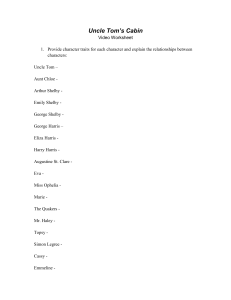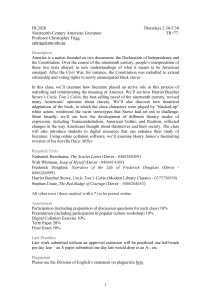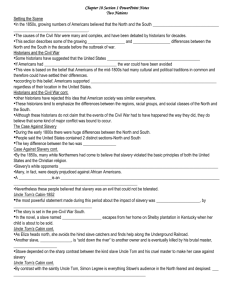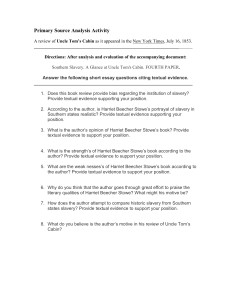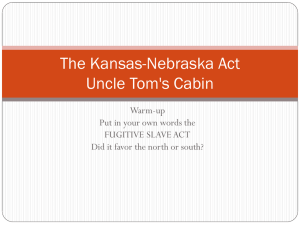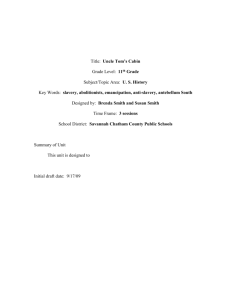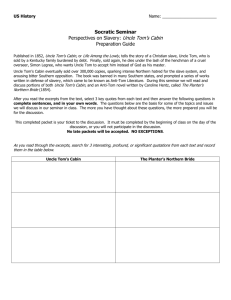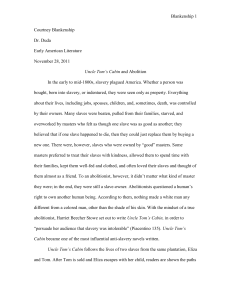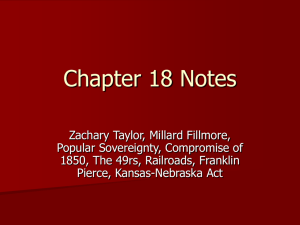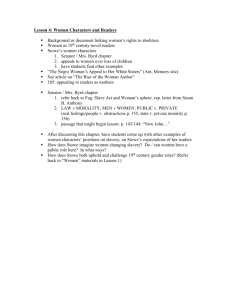Uncle Tom's Cabin
advertisement
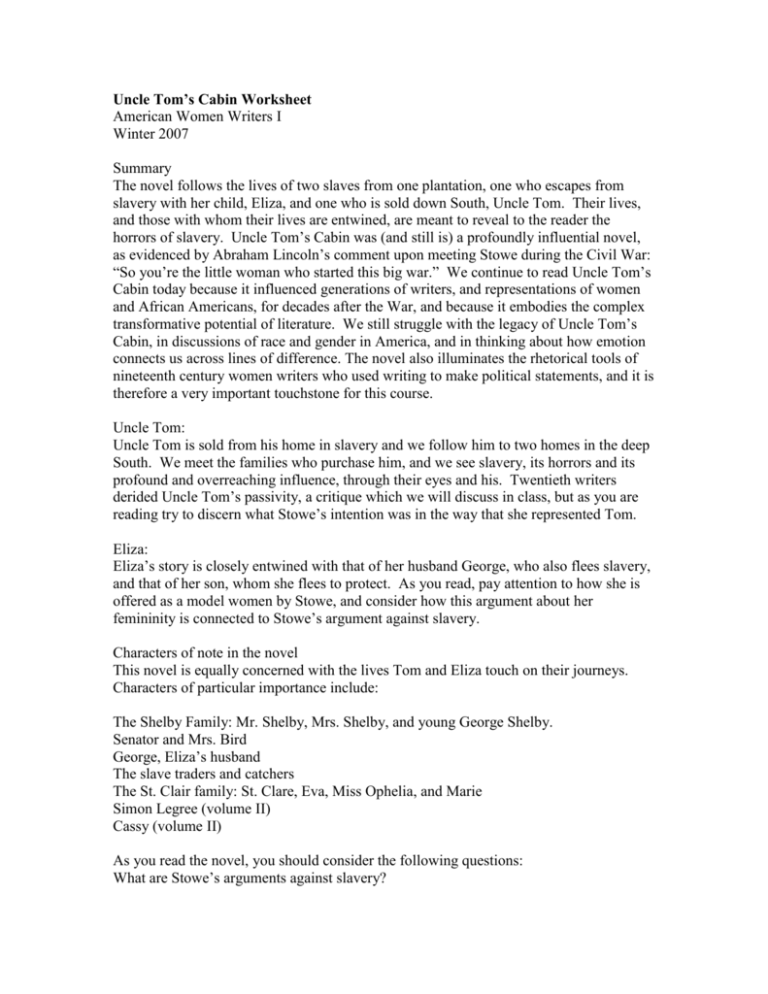
Uncle Tom’s Cabin Worksheet American Women Writers I Winter 2007 Summary The novel follows the lives of two slaves from one plantation, one who escapes from slavery with her child, Eliza, and one who is sold down South, Uncle Tom. Their lives, and those with whom their lives are entwined, are meant to reveal to the reader the horrors of slavery. Uncle Tom’s Cabin was (and still is) a profoundly influential novel, as evidenced by Abraham Lincoln’s comment upon meeting Stowe during the Civil War: “So you’re the little woman who started this big war.” We continue to read Uncle Tom’s Cabin today because it influenced generations of writers, and representations of women and African Americans, for decades after the War, and because it embodies the complex transformative potential of literature. We still struggle with the legacy of Uncle Tom’s Cabin, in discussions of race and gender in America, and in thinking about how emotion connects us across lines of difference. The novel also illuminates the rhetorical tools of nineteenth century women writers who used writing to make political statements, and it is therefore a very important touchstone for this course. Uncle Tom: Uncle Tom is sold from his home in slavery and we follow him to two homes in the deep South. We meet the families who purchase him, and we see slavery, its horrors and its profound and overreaching influence, through their eyes and his. Twentieth writers derided Uncle Tom’s passivity, a critique which we will discuss in class, but as you are reading try to discern what Stowe’s intention was in the way that she represented Tom. Eliza: Eliza’s story is closely entwined with that of her husband George, who also flees slavery, and that of her son, whom she flees to protect. As you read, pay attention to how she is offered as a model women by Stowe, and consider how this argument about her femininity is connected to Stowe’s argument against slavery. Characters of note in the novel This novel is equally concerned with the lives Tom and Eliza touch on their journeys. Characters of particular importance include: The Shelby Family: Mr. Shelby, Mrs. Shelby, and young George Shelby. Senator and Mrs. Bird George, Eliza’s husband The slave traders and catchers The St. Clair family: St. Clare, Eva, Miss Ophelia, and Marie Simon Legree (volume II) Cassy (volume II) As you read the novel, you should consider the following questions: What are Stowe’s arguments against slavery? How do her representations of women, gender relations, and African-Americans support her argument against slavery? Also, note repeated images and scenes in the novel, and consider how they contribute to Stowe’s anti-slavery argument. We will discuss these points in the first half of class. In the second half of class we will work in small groups to consider the legacy that Uncle Tom’s Cabin left for women writers after Stowe. Uncle Tom’s Cabin Begin with the reception of UTC—what a very important book it is, as an anti-slavery document, and a model for how women can write, and what they can accomplish with writing. Swallow Barn and visions of slavery as a happy institution; see also pro-slavery arguments based on religion and natural order. What are Stowe’s arguments against slavery? How do they respond to this argument? How do representations of women, gender, and race work to sustain her argument this argument? What, ultimately, does she want from her readers? What political imperative is encompassed in her phrase “feel right”? Sentiment—why all of the tears, all of the death? Why is death so important to the larger anti-slavery argument? Melodrama—what is the role of coincidence in this novel and how is related to Stowe’s anti-slavery argument? Melodrama is often opposed to realism—does this opposition work in Uncle Tom’s Cabin? Separate spheres—see Senator Bird and Mrs. Bird What is the legacy of Uncle Tom’s Cabin? Representations of Women Representation of African Americans Question of where African-Americans belong in the nation

